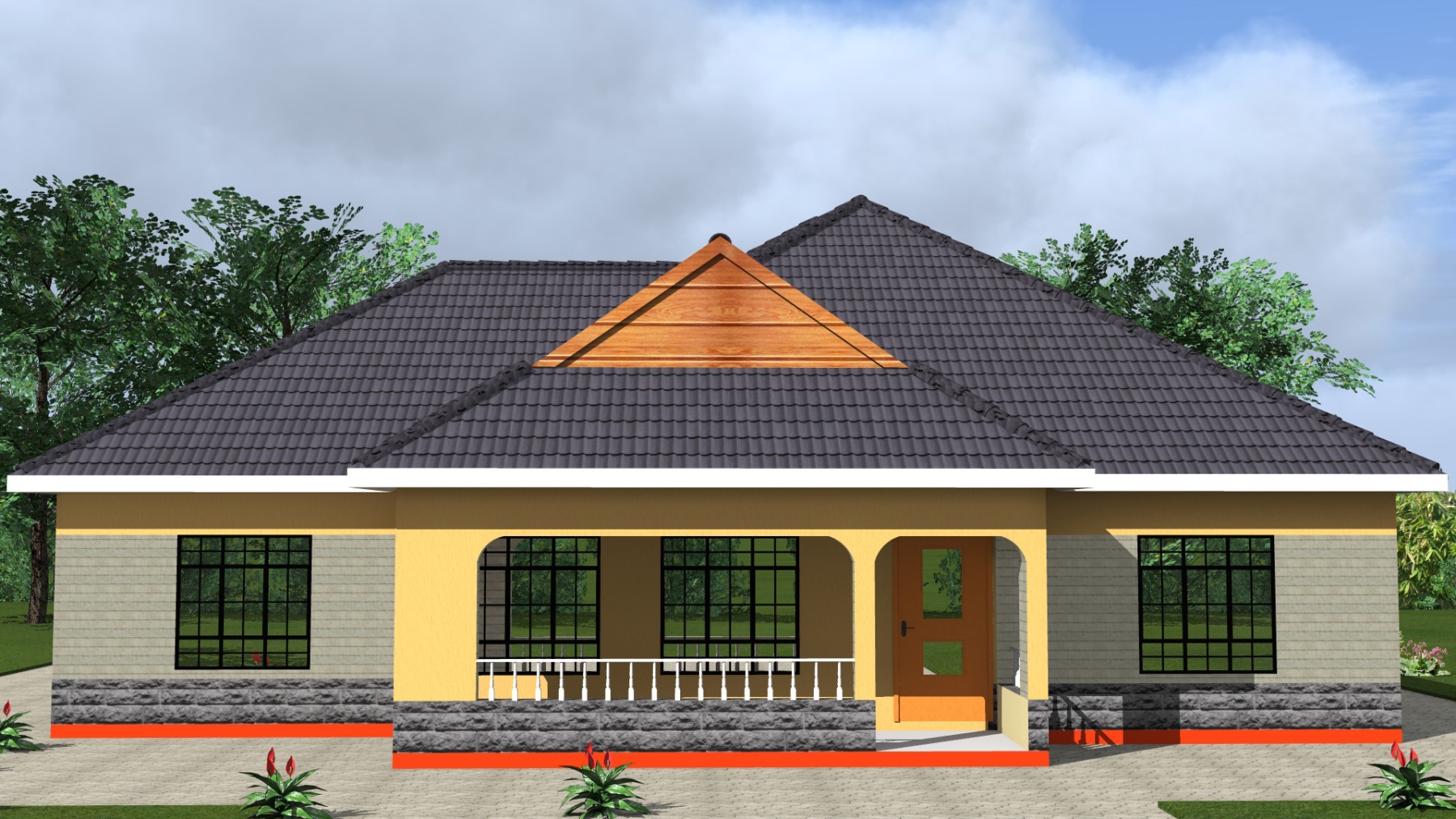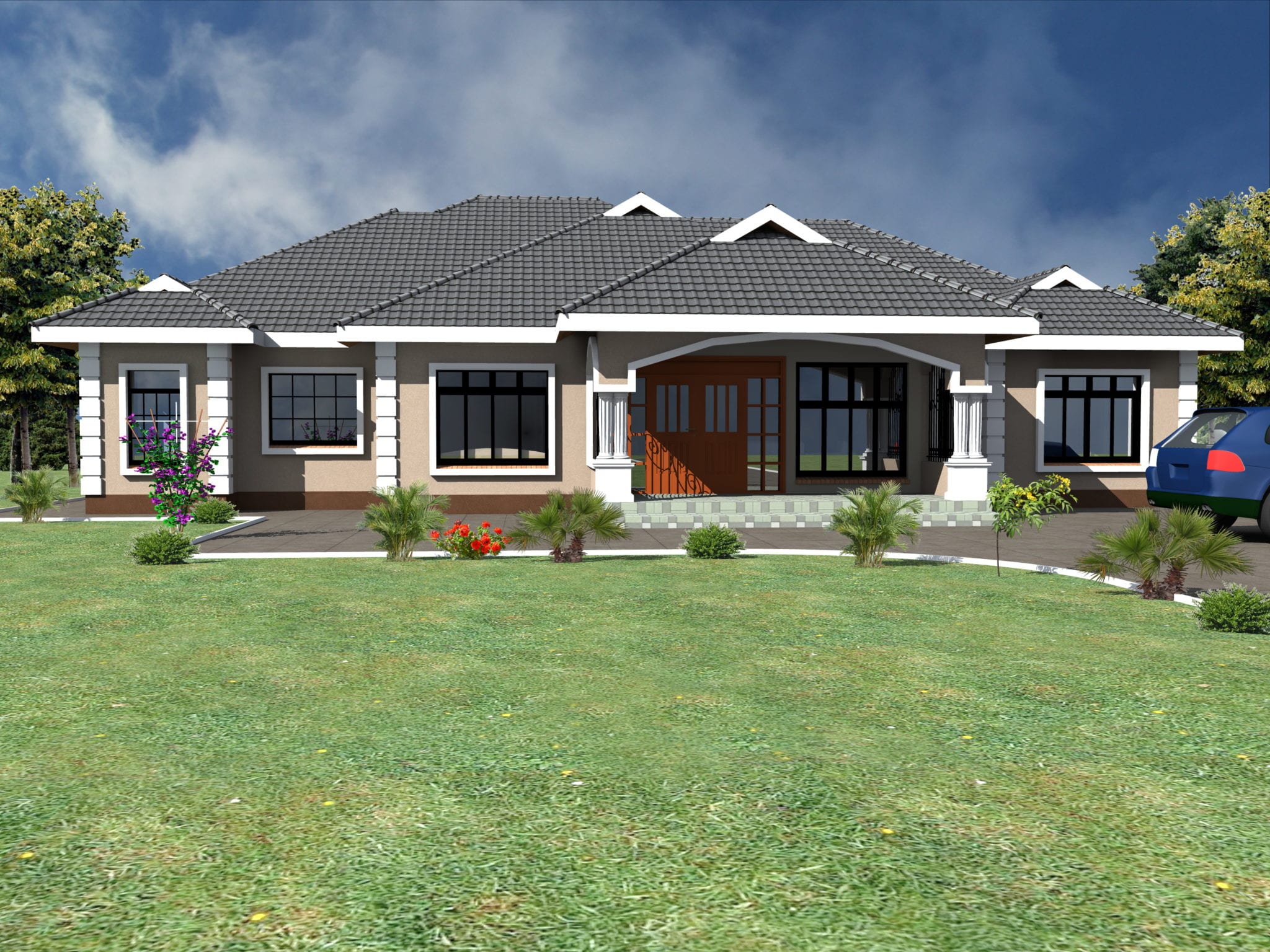Understanding the Demand for Modern 4-Bedroom Houses in Kenya: 4 Bedroom Modern House Plans In Kenya

The Kenyan real estate market is experiencing a surge in demand for modern homes, particularly those with four bedrooms. This trend reflects a confluence of factors that are reshaping the housing landscape and driving a preference for spacious, well-designed living spaces.
Factors Driving the Demand for Modern Homes
The increasing demand for modern homes in Kenya is driven by a combination of economic growth, urbanization, and changing lifestyle preferences.
- Economic Growth: Kenya’s economy has been experiencing steady growth, leading to increased disposable incomes and a growing middle class. This economic prosperity has fueled a desire for better living standards, including owning spacious and modern homes.
- Urbanization: The rapid urbanization of Kenyan cities has led to a significant increase in population density. This has created a shortage of affordable housing options, particularly in urban areas, and has driven up demand for modern homes that offer comfortable and spacious living spaces.
- Changing Lifestyle Preferences: Modern lifestyles emphasize comfort, functionality, and aesthetics. Families are seeking homes that cater to their evolving needs, such as home offices, entertainment areas, and outdoor spaces.
The Appeal of 4-Bedroom Houses
Four-bedroom houses are particularly appealing to families and larger households. They offer ample space for comfortable living, accommodating multiple generations or providing dedicated spaces for children, guests, or home offices. The spaciousness allows for individual privacy and promotes a harmonious living environment.
- Accommodating Growing Families: With Kenya’s population growth, families are expanding, and 4-bedroom houses provide the necessary space for children, parents, and grandparents to live comfortably under one roof.
- Multigenerational Living: The concept of multigenerational living is becoming increasingly popular in Kenya, as families seek to maintain close relationships and provide support for older generations. 4-bedroom houses offer the ideal space for accommodating extended families.
- Home Office and Entertainment Spaces: Modern lifestyles often require dedicated spaces for work and entertainment. 4-bedroom houses allow for the creation of home offices, media rooms, or guest suites, enhancing the functionality and comfort of the living space.
Key Features of Modern 4-Bedroom House Plans

Modern 4-bedroom house plans in Kenya are designed to offer a balance of functionality, style, and comfort, catering to the evolving needs of modern families. These plans incorporate various design elements that define modern architecture, resulting in homes that are not only aesthetically pleasing but also practical and efficient.
Open Floor Plans
Open floor plans are a hallmark of modern homes, creating a sense of spaciousness and flow. This layout eliminates unnecessary walls and partitions, connecting the living, dining, and kitchen areas, making them ideal for social gatherings and family interactions.
Natural Light Integration
Modern homes prioritize natural light, maximizing its benefits through large windows and strategically placed skylights. This approach not only brightens up interiors but also reduces reliance on artificial lighting, promoting energy efficiency and a sense of well-being.
Minimalist Aesthetics, 4 bedroom modern house plans in kenya
Minimalist aesthetics are often associated with modern homes, characterized by clean lines, simple forms, and a focus on functionality. This approach emphasizes the use of neutral colors, natural materials, and minimal ornamentation, creating a serene and uncluttered living environment.
Layout Considerations for 4-Bedroom Homes
Modern 4-bedroom house plans typically prioritize a well-defined layout that ensures privacy and functionality for each area. The bedrooms are usually located on the upper floor, while the living, dining, and kitchen areas are positioned on the ground floor for easy access and convenience.
Innovative Features in Modern Homes
Modern homes often incorporate innovative features that enhance comfort, efficiency, and sustainability. Smart home technology, for instance, allows for automated control of lighting, security systems, and appliances, enhancing convenience and energy efficiency.
- Sustainable Design Elements: Modern homes often feature sustainable design elements, such as solar panels, rainwater harvesting systems, and energy-efficient appliances, contributing to a reduced environmental footprint.
- Outdoor Living Spaces: Modern homes frequently include outdoor living spaces, such as patios, balconies, or courtyards, extending the living area and providing a seamless transition between indoors and outdoors.
Practical Considerations for Designing and Building Modern 4-Bedroom Houses in Kenya

Building a modern 4-bedroom house in Kenya requires careful consideration of various practical aspects. This includes understanding and adhering to local building codes and regulations, making informed decisions about building materials, developing a comprehensive budget, and navigating the design and construction process effectively.
Building Codes and Regulations
Compliance with local building codes and regulations is crucial for ensuring the safety, structural integrity, and overall quality of your house. These codes are designed to protect the public and ensure that buildings are constructed to withstand local environmental conditions.
- The National Construction Authority (NCA) in Kenya sets the standards for building codes and regulations.
- These codes cover various aspects, including foundation design, structural stability, fire safety, electrical wiring, plumbing, and accessibility.
- Obtaining building permits from the relevant authorities is mandatory before commencing construction.
- It’s advisable to consult with a qualified architect or engineer to ensure your plans meet the required codes and regulations.
Building Material Selection
The choice of building materials significantly impacts the cost, durability, and environmental footprint of your house. Factors to consider include cost, availability, and environmental impact.
- Cost: Materials like concrete, steel, and timber are widely available in Kenya but can vary in price depending on market conditions and sourcing.
- Availability: Locally sourced materials are often more readily available and can reduce transportation costs. This includes materials like quarry stones, clay bricks, and bamboo.
- Environmental Impact: Sustainable building materials, such as recycled materials, bamboo, and earth bricks, can reduce the environmental footprint of your project.
Budgeting and Financing
Developing a realistic budget and securing financing are essential steps in the home construction process.
- Budgeting: Factors to consider include land cost, building materials, labor costs, permits, and contingencies.
- Financing: Options include bank loans, mortgages, and savings.
- Bank loans and mortgages typically require a down payment and may involve interest rates and repayment terms.
- Savings can be used as a down payment or to supplement other financing options.
- Construction Cost Estimation: A qualified contractor or architect can provide a detailed cost breakdown, taking into account local market conditions and material prices.
Design and Construction Process
The design and construction process involves multiple stages, from site selection to construction management.
- Site Selection: Consider factors such as location, accessibility, soil conditions, and proximity to utilities.
- Architectural Planning: Collaborate with an architect to develop detailed plans that meet your requirements and building codes. This includes creating floor plans, elevations, and sections.
- Construction Management: Hiring a qualified contractor is essential for overseeing the construction process, ensuring quality control, and managing the budget.